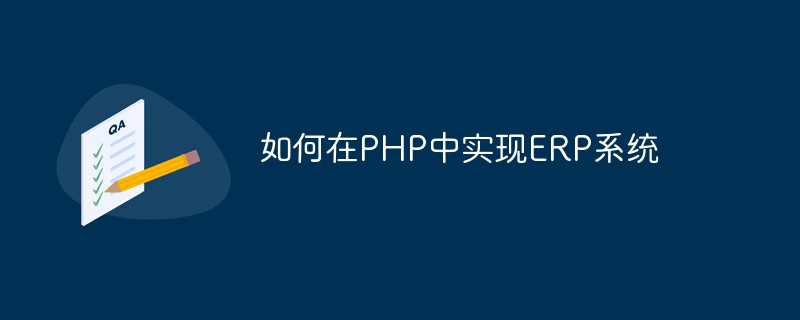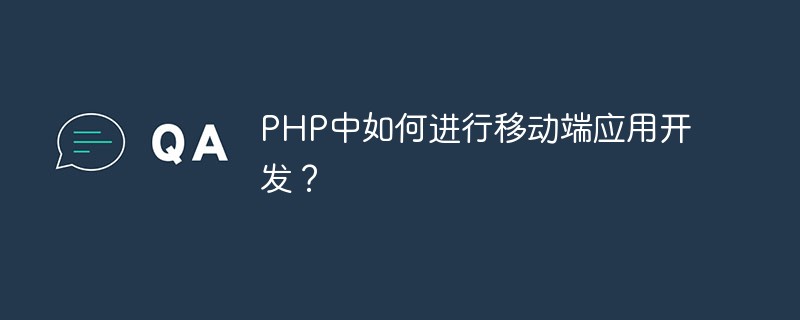 Backend Development
Backend Development PHP Tutorial
PHP Tutorial Amap API Tutorial: How to implement map geofence triggering in PHP
Amap API Tutorial: How to implement map geofence triggering in PHPAmap API Tutorial: How to implement the geofence trigger of the map in php
Geofencing is a very useful function that can determine whether the user is in a specific area based on geographical location information. In actual projects, geofencing has a wide range of usage scenarios, such as electronic fences, location reminders, real-time positioning, etc. In this tutorial, we will introduce how to use the Amap API to implement geofence triggering of the map in PHP.
First, we need to register a developer account on the Amap open platform and create an application to obtain the API key.
After the registration is completed and the API key is obtained, we can start writing code. First, we need to create a php file named geofence.php. In the file, we need to introduce the library file of the Amap API and set the API key:
<?php
require_once('path/to/your/autoload.php');
use GuzzleHttpClient;
use GuzzleHttpPsr7Response;
$apiKey = '你的API密钥';
$apiUrl = 'https://restapi.amap.com/v3';
$client = new Client([
'base_uri' => $apiUrl,
'timeout' => 2.0,
]);
//以下是具体的地理围栏触发逻辑
//...Next, we need to implement the trigger logic of the geofence. Amap API provides many interfaces related to geofences, such as creating fences, querying fence status, fence monitoring, etc. Here, we take querying the fence status as an example to demonstrate how to trigger the geofence.
First, we need to obtain the current user's location information through the fence query interface of the Amap API. The address of the interface is: /geofence/status. We can use HttpClient to send GET requests, the code is as follows:
$response = $client->request('GET', '/geofence/status', [
'query' => [
'key' => $apiKey,
'diu' => '用户设备ID',
'locations' => '用户当前位置'
]
]);
$data = json_decode($response->getBody()->getContents(), true);
//处理返回的数据
//...In the above code, we use the GuzzleHttp library to send HTTP requests, and use the $response variable to receive the response results. Then, we use the json_decode function to convert the returned json data into an array to facilitate subsequent operations.
Next, we need to process the returned data. According to the documentation of the Amap API, the returned data includes information such as whether the user is within the fence, the ID of the fence, etc. We can handle it accordingly according to our own business needs.
Finally, we can encapsulate the above code into a function to facilitate calling it in other places. The code is as follows:
function checkGeofenceStatus($diu, $location)
{
//省略上述代码
$response = $client->request('GET', '/geofence/status', [
'query' => [
'key' => $apiKey,
'diu' => $diu,
'locations' => $location
]
]);
$data = json_decode($response->getBody()->getContents(), true);
//处理返回的数据
//...
return $data;
}
//在其他地方调用函数
$result = checkGeofenceStatus('用户设备ID', '用户当前位置');Through the above code, we can implement the geofence triggering of the map in PHP. Of course, the Amap API also provides many other powerful functions, such as adding and deleting fences, fence monitoring, etc. Readers can further explore and use related interfaces according to their own needs.
To sum up, it is not difficult to use the Amap API to trigger the geofence of the map in PHP. You only need to register a developer account, obtain the API key, and then follow the above steps to write the code. accomplish. Hope this tutorial is helpful to readers!
The above is the detailed content of Amap API Tutorial: How to implement map geofence triggering in PHP. For more information, please follow other related articles on the PHP Chinese website!
 如何在PHP中实现SEO优化May 20, 2023 pm 01:30 PM
如何在PHP中实现SEO优化May 20, 2023 pm 01:30 PM随着互联网的发展,SEO(SearchEngineOptimization,搜索引擎优化)已经成为了网站优化的重要一环。如果您想要使您的PHP网站在搜索引擎中获得更高的排名,就需要对SEO的内容有一定的了解了。本文将会介绍如何在PHP中实现SEO优化,内容包括网站结构优化、网页内容优化、外部链接优化,以及其他相关的优化技巧。一、网站结构优化网站结构对于S
 如何在PHP中实现多语言网站May 22, 2023 am 11:31 AM
如何在PHP中实现多语言网站May 22, 2023 am 11:31 AM随着互联网的日益普及,越来越多的网站需要支持多语言。这是因为网站的受众群体可能来自不同的地区和文化背景,如果只提供单一语言的网站,可能会限制访问者的数量和体验。本文将介绍如何在PHP中实现多语言网站。一、语言文件的创建和设计语言文件是存储所有文本字符串及其对应翻译的文件,需要以特定的格式创建。在创建语言文件时,需要考虑以下几个方面:1.命名和存储位置文件名应
 PHP中的加密和解密技术May 11, 2023 am 08:03 AM
PHP中的加密和解密技术May 11, 2023 am 08:03 AMPHP是一种被广泛应用的Web开发语言,其加密和解密技术在数据安全性方面具有重要意义。本文将介绍PHP中的加密和解密技术,并探讨其在Web应用程序中的实际应用。一、加密技术加密技术是一种将普通文本转换为加密文本的过程。在PHP中,加密技术主要应用于传输数据的安全性,例如用户的登录信息、交易数据等。PHP中常见的加密技术如下:哈希加密哈希加密是将一个任意长度的
 如何在PHP中实现ERP系统May 20, 2023 pm 06:21 PM
如何在PHP中实现ERP系统May 20, 2023 pm 06:21 PM随着电子商务和企业管理的发展,许多企业开始寻找更好的方法来处理其日常业务流程。ERP系统是一种能够整合企业各种业务流程的软件工具。它提供了全面的功能,包括生产、销售、采购、库存、财务等方面,帮助企业提高效率、控制成本和提高客户满意度。而在PHP编程语言中,也能够实现ERP系统,这就需要我们掌握一些基本的知识和技术。下面,我们将深入探讨如何在PHP中实现ERP
 PHP中的即时通讯技术指南May 22, 2023 pm 12:31 PM
PHP中的即时通讯技术指南May 22, 2023 pm 12:31 PM近年来,随着互联网技术的不断发展,即时通讯技术成为了各个领域中不可或缺的一部分,而在Web开发中,PHP作为一种广泛应用的服务器端脚本语言,也开始探索并应用即时通讯技术。本文将围绕PHP中的即时通讯技术,从通讯协议、技术方案、应用场景三个方面进行介绍和指南。一、通讯协议HTTP协议HTTP协议是Web开发中最常用的协议之一,适用于上传、下载、浏览网站等场景。
 如何在PHP中使用闭包函数May 18, 2023 pm 05:30 PM
如何在PHP中使用闭包函数May 18, 2023 pm 05:30 PMPHP闭包函数是指在声明函数时所定义的函数体内部所使用的变量和外部环境中的变量形成一个封闭的作用域,这种函数又被称为匿名函数。闭包函数在PHP中被广泛应用,可以用于实现事件处理、回调等一系列功能。本文将介绍如何在PHP中使用闭包函数,以及一些使用闭包函数的最佳实践。一、如何定义一个闭包函数定义一个闭包函数非常简单,只需要使用函数关键字followedby
 如何在PHP中使用机器人函数May 18, 2023 pm 10:00 PM
如何在PHP中使用机器人函数May 18, 2023 pm 10:00 PM最近,随着人工智能技术的快速发展,机器人技术也逐渐得到了广泛的应用,其中,机器人函数成为了PHP编程语言中一个非常实用的工具。本文将介绍如何在PHP中使用机器人函数。什么是机器人函数机器人函数指在PHP编程语言中用于模拟机器人行为的一组函数。这些函数包括move()、turn()等,可以让我们编写出模拟机器人运动、转向等相关操作的代码。在实际应用中,机器人函
 PHP中如何进行移动端应用开发?May 13, 2023 am 08:21 AM
PHP中如何进行移动端应用开发?May 13, 2023 am 08:21 AM近年来,随着移动设备的普及和移动互联网的蓬勃发展,越来越多的企业和开发者开始把注意力放在移动端应用上。而PHP作为一种流行的Web开发语言,同样有着不少的移动端应用开发需求。那么,PHP中如何进行移动端应用开发呢?一、了解移动端应用在开始PHP移动端应用开发之前,我们首先需要了解移动端应用的特点和要求。相较于Web网站,移动端应用有着更高的用户体验要求和更严


Hot AI Tools

Undresser.AI Undress
AI-powered app for creating realistic nude photos

AI Clothes Remover
Online AI tool for removing clothes from photos.

Undress AI Tool
Undress images for free

Clothoff.io
AI clothes remover

AI Hentai Generator
Generate AI Hentai for free.

Hot Article

Hot Tools

SAP NetWeaver Server Adapter for Eclipse
Integrate Eclipse with SAP NetWeaver application server.

Dreamweaver Mac version
Visual web development tools

ZendStudio 13.5.1 Mac
Powerful PHP integrated development environment

Atom editor mac version download
The most popular open source editor

SublimeText3 Linux new version
SublimeText3 Linux latest version





